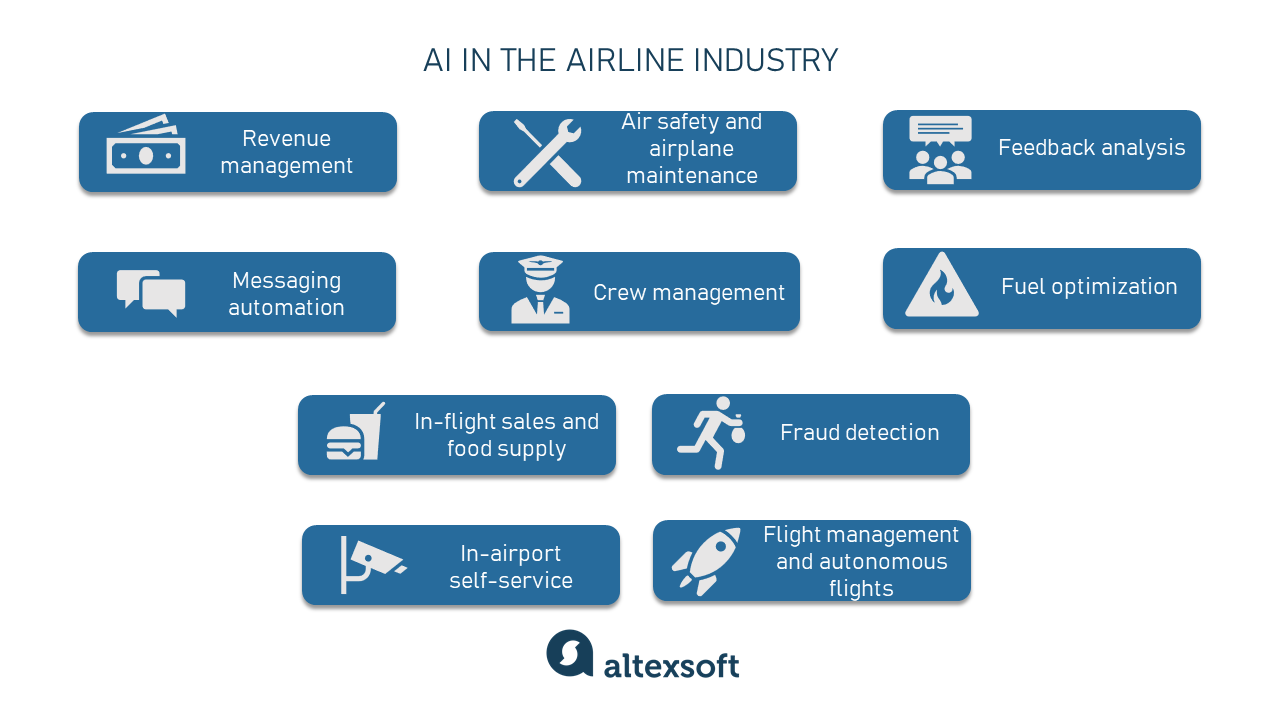
Technology changes the way businesses interact with their customers, make strategic decisions, and build workflows.
NB: This is an article from Altexsoft
For instance, such actions as booking a flight via phone or conducting solely offline surveys seem unusual these days. Real-time access to data — the 21st-century oil — allows organizations to take informed steps towards operational efficiency.
We discussed with data science specialists and AI startuppers how airline industry players use cognitive technologies to reach new heights. But first, consider checking our article dedicated to data science, AI, ML, and other modern buzzwords to learn how they differ.
Subscribe to our weekly newsletter and stay up to date
The main applications of AI and data science in the airline industry
Artificial intelligence and its cognitive technologies that make a sense of data can streamline and automate analytics, machinery maintenance, customer service, as well as many other internal processes and tasks. So, AI technologies are useful for various aspects of airline operation management.
How airlines leverage AI
1. Revenue Management
Revenue management (RM) is the application of data and analytics aimed at defining how to sell a product to those who need it, at a reasonable cost at the right time and using the right channel.
It’s based on the idea that customers perceive product value differently, so the price they are ready to pay for it depends on target groups they belong to and purchase time.
Revenue management specialists make good use of AI to define destinations and adjust prices for specific markets, find efficient distribution channels, and manage seats to keep the airline simultaneously competitive and customer-friendly.
Data scientist Konstantin Vandyshev, who worked at Transavia’s Revenue Management department, stresses that data science disciplines come in handy for achieving revenue management tasks.
Demanded flight routes. While RM is about finding the best way to sell a product or service, carriers use AI to answer one of the key questions: where to fly? “To define air routes, specialists have to analyze data and make decisions based on the insights. When researching a demand for a destination among different customer groups, they can rely on such data sources as search history and macroeconomic factors (e.g. GDP),” says Konstantin.
RM has industry-specific standards that specialists must use to define willingness to pay.
Willingness to pay. Collecting and crunching data about customers, airlines understand passengers’ tastes and behavior well enough to offer them transportation options they prefer and, more important, are ready to spend money on. So, revenue managers start from measuring willingness to pay (WTP).
Willingness to pay reveals “when” a customer is likely to pay “a maximum price” for a product or service, explains the data scientist. “It’s assumed that customers are ready to pay more when there is less time before departure time. And society finds this pricing fair. WTP in the airline industry, therefore, depends on the day before departure (DBD). In practice, specialists define median WTP — a price that 50 percent of customers would like to pay for a ticket on a specific DBD. Such WTP is equivalent to price elasticity (the number of passengers that would buy a ticket if a price drops by a certain percent) with some assumptions between market demand and supply.”
This metric is connected to dynamic pricing — the practice of pricing a product based on a specific customer’s willingness to pay. The calculation of WTP requires selecting data correctly. Revenue management can combine similar markets and, alternatively, distinguish high and low seasons, as well as holidays and weekends.




